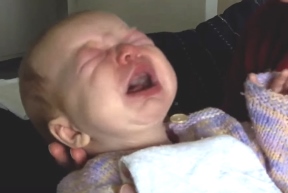After 1 to 2 weeks intense fits paroxysms of coughing start. Caused by the bacterium Bordetella pertussis occasionally Bordetella parapertussis Infants less than 6 months of age are at greatest risk of complications apnoea severe pneumonia encephalopathy and are most commonly infected by spread from family members Can occur in immunised children but the illness is generally less severe.
According to the CDC babies with whooping cough may not cough at all.

Pertussis in infants. Severe pertussis disease was more common in hospitalised infants aged less than 3 months Figure 1. It is important to know that many babies with whooping cough dont cough at all. Instead it causes them to stop breathing and turn blue.
It mainly affects babies and young children. It mainly affects babies and young children. Some features should help pediatricians to suspect pertussis but clinical suspicion has a low sensitivity.
Infants with pertussis experience the highest rates of hospitalization complications and death. The clinical presentation including complications and the diagnosis of pertussis whooping cough infection in infants and children will be discussed here. Be on the lookout for pauses in breathing which can happen with or without coughing.
The aim of pertussis vaccination is to reduce risk of severe disease in infants and young children. Parapertussis DNA in 2 and co-detection of B. The illness often starts like the common cold with a runny nose sneezing and a mild cough or fever.
If your little one gets whooping cough the pertussis bacteria attach to the cilia and stop them from moving. The treatment and prevention of pertussis in infants and children. Pertussis DNA was confirmed in the infants as well in their mothers in 38 of the cases.
Whooping cough pertussis is a contagious illness caused by bacteria. Adults are a reservoir for infections in very young infants in whom pertussis may be severe and life-threatening. Pertussis or whooping cough caused by the gram-negative pleomorphic bacillus Bordetella pertussis is a highly contagious potentially life-threatening respiratory tract illness that has re-emerged worldwide as a cause of substantial morbidity and mortality in infants children and adolescents despite high vaccination rates.
The genetic analysis identified ptxA1 ptxP3and prn2 in all the 4infants positive for pertussis. Whooping cough can cause serious and sometimes life-threatening complications in babies. This in turn causes intense coughing fits as your babys body tries to clear the lungs of mucus without the help of the cilia.
After 1 to 2 weeks intense fits paroxysms of coughing start. This subtype seems to be prevalent in many parts of Europe as described already for Italy12Generally young infants are at highest risk for acquiring pertussis. Stage 1 begins with a runny nose sneezing low-grade fever and mild occasional cough lasting a week to 10 days.
We suggest a systematic use of Real Time Polymerase Chain Reaction to support the clinical suspicion of pertussis in patients with less than 3 months of age hospitalized with acute respiratory symptoms. Of 35 hospitalised infants in this age group 10 29 required ICU admission and eight of these needed ventilation support including all 3 deaths identified in this case series. Children 14 years old.
Cases in adolescents and adults are reported with increasing frequency in many countries. Bordetella pertussis continues to circulate even in populations where a high vaccine coverage of infants and children is achieved. Gagging gasping and watery eyes are also common.
Read more about the symptoms and treatment of whooping cough in babies. About half of babies who get whooping cough end up in the hospital. Two types of pertussis vaccines are available.
Pertussis is a serious disease in infants and it is often unrecognized. Co detection of B. Confirmed pertussis cases in infants were 29 posed to persons with mild or unrecognized pertussis or to times 95 CI 13 24 more likely to have had a source persons with highly infectious pertussis who had only brief or identified than probable infant-cases 关228 38 of 604 unrecognized contact with the infant.
Confirmations of Pertussis infection in household contacts by culture RT- PCR and serology were 10 46 and 39 respectively. Holmesii DNA in 4. Pertussis in older children and adults is perceived by many as being a mild disease but it is a significant health burden in persons of all ages.
This is especially true within the first 6 months of life. The epidemiology microbiology and pathogenesis of pertussis infection and the clinical features treatment and prevention of pertussis in adolescents and adults are discussed. Pertussis might account for 1 of mortality of children 5 years of age with infants too young to be vaccinated at highest risk 2 3.
Whooping cough also known as pertussis is a bacterial infection that may affect children and adults. Whooping cough pertussis is a contagious illness caused by bacteria. The illness often starts like the common cold with a runny nose sneezing and a mild cough or fever.

